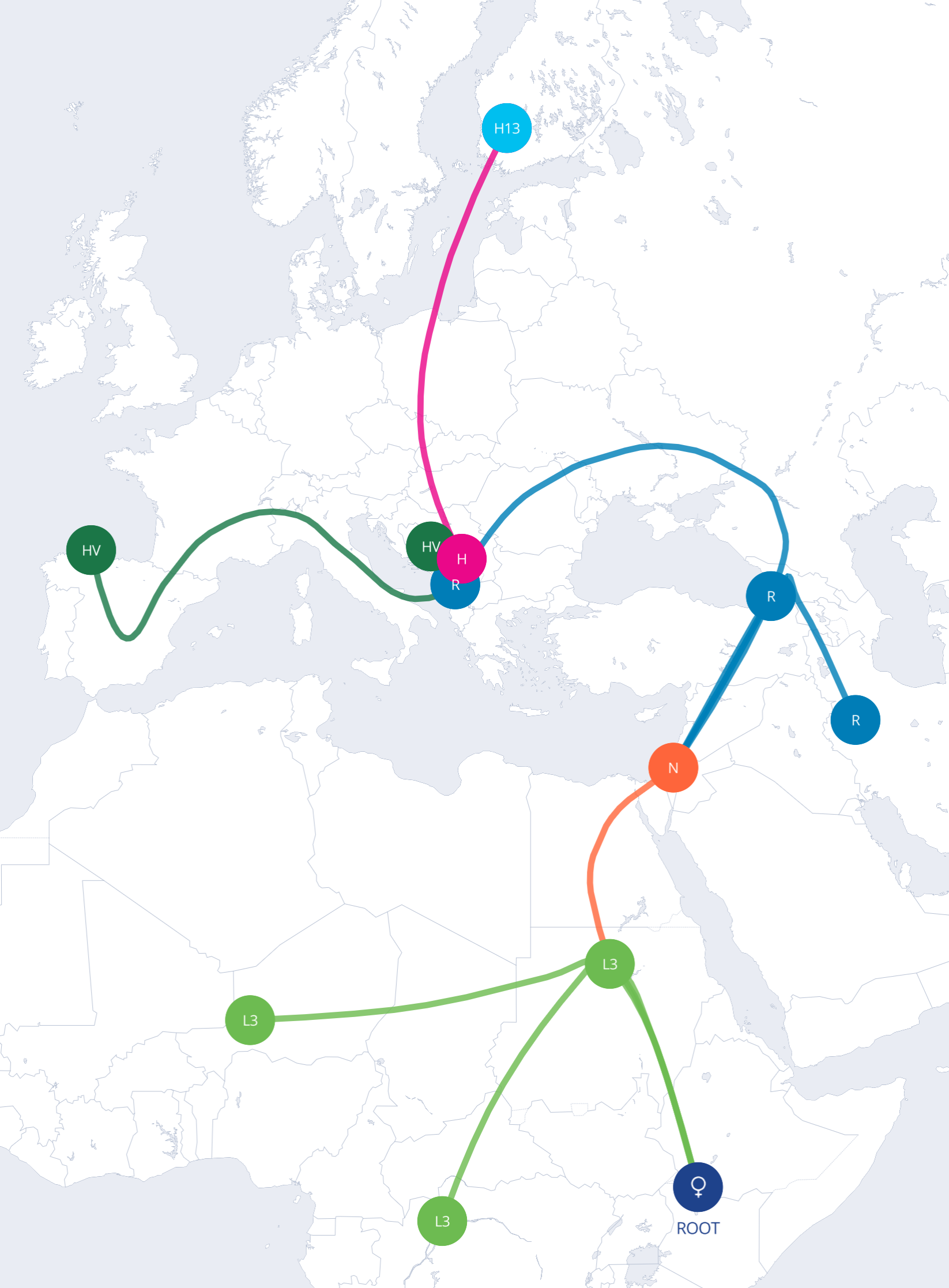
In This Article
In This Article
You and a chimp share nearly every genetic “letter,” yet you walk, talk, and think very differently. Tracing where our DNA diverges shows how modest edits—rather than wholesale rewrites—built the human experience.
Know Your DNA Reviews

Don't miss out on the opportunity to learn more about yourself. Read our best DNA test page to find the best one for you.
Scientists align comparable stretches of DNA to calculate similarity. When they lined up protein-coding genes on both genomes, 98.8 percent of bases matched. Yet that snapshot overlooks stretches impossible to align—extra copies, missing chunks, and large rearrangements that distinguish the two species.
Humans and chimpanzees last shared a common ancestor about six to eight million years ago, long after our branch split from gorillas and orangutans. That short evolutionary window magnifies the impact of each mutation, insertion, and chromosomal fusion.
| Change type | Simple definition | Evolutionary impact |
| Single-letter swaps (SNPs) | One base pair is replaced by another | May tweak a protein or stay silent |
| Insertions & deletions (indels) | Chunks of DNA added or lost | Can silence genes, create new exons, or reshape control regions |
| Copy-number gains & losses | Extra or missing gene copies | Alters gene dosage; duplicates become raw material for new functions |
| Chromosome flips & fusions | Large structural rearrangements | Reorganize gene neighborhoods and 3-D folding |
| Regulatory rewiring | Changes in promoters, enhancers, and silencers | Shifts when and where genes turn on |
Counting every layer drops overall similarity well below 99 percent, depending on which regions—and which kinds of variation—you include.
Tiny edits can redirect development. FOXP2 differs from the chimp version by just two amino acids, yet it adjusts dozens of language-related genes during fetal brain growth. A partial duplication of SRGAP2 in humans slows the pruning of young neurons, extending the window for wiring complex cortical circuits. Rapidly evolving stretches called human accelerated regions (HARs) sit near genes that expand the neocortex; their altered timing likely boosted surface area for higher cognition.
Copy-number changes in the major histocompatibility complex (MHC) and killer-cell immunoglobulin-like receptor (KIR) families remodel how white blood cells spot pathogens. Some gene deletions trimmed obsolete receptors, while gene duplications added tools for new microbial threats—illustrating positive selection in action.
Chimps keep roughly two-thirds of their olfactory-receptor genes intact. Humans let many lapse into pseudogenes as culture, cooking, and color vision eased reliance on scent. Similar loss-of-function trends appear in taste-receptor genes adapted to cooked diets.
Non-coding DNA acts like software. Enhancers, silencers, and looping anchors dictate when and where genes run, while chromatin marks decide which chromosomal territories stay open or closed. Even a single-base tweak can double a growth gene’s activity at a critical embryo stage.
Transposable elements—mobile bits of DNA—drop ready-made control motifs into new sites, quickly rewiring neighboring genes. Many human-specific regulatory switches trace to Alu or LINE insertions that landed after the chimp split.
Everyday analogy: Swapping a traffic light’s timer changes an entire city block’s flow without rebuilding the street. Likewise, timing shifts in gene expression reshape tissues without changing protein recipes.
For a plain-language refresher on how such mutations arise, see our explainer on genetic changes.
Skin tone offers a daily reminder of regulatory power—most variation comes from switches that dial melanin genes up or down, as detailed in our primer on skin-color genetics.
Modern sequencers read three billion base pairs in days. Researchers then:
Consumer tests sequence a subset of markers, not your entire nuclear genome. Still, low-pass whole-genome sequencing—outlined in our guide to budget genome reads—is shrinking the gap. The raw files list millions of variants against the human reference genome, but they tell you little about evolutionary history until researchers compare them with ape genomes or ancient DNA.
Curious how labs turn spit into data? Our walkthrough of DNA testing basics covers sample prep, base-calling, and quality control. To dive deeper into molecular machinery like promoters, exons, and non-coding RNAs, review our overview of molecular genetics.
A few million well-placed edits turned an ape genome into blueprints for cities, art, and smartphones. When you see “percent identical” on a headline, remember that context, regulation, and environment—not raw similarity—shape who we become.
Thinking of sequencing your own genome? Pair the data with family records, evolutionary context, and guidance from a certified genetic counselor to translate code into meaningful insight.
Know Your DNA Reviews

Looking for a DNA test that's accurate and can tell you about your health and heritage?
